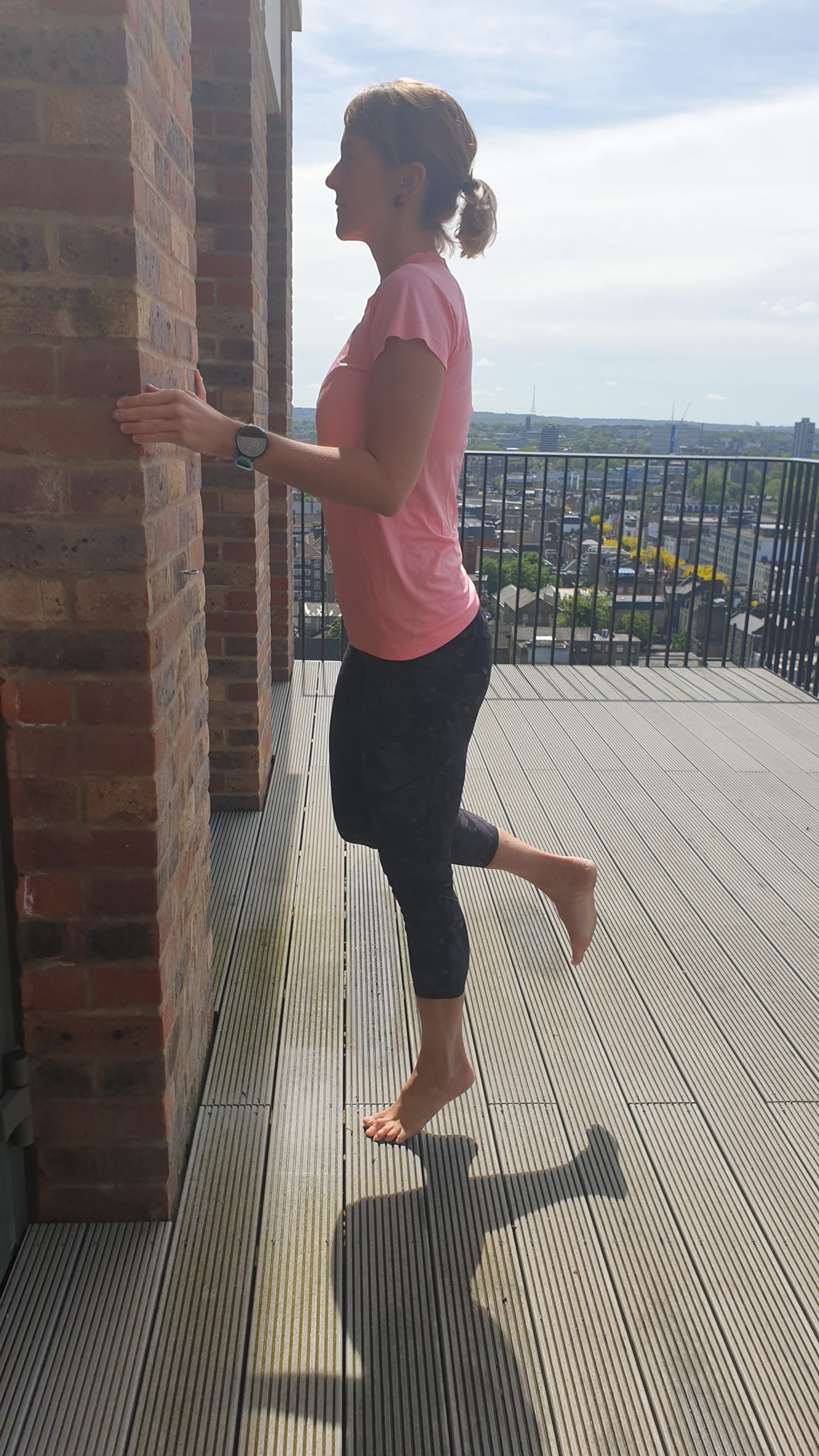The calf is made up of three muscles:
- Gastrocnemius
- Soleus
- Plantaris
The gastrocnemius is the largest and most commonly strained muscle. It crosses three joints, knee, ankle and metatarsals in the foot. The most common place for a strain is on the middle inside portion of the muscle. Halfway up on the inside of the leg the largest flashiest part of muscle. Soleus and plantaris strains are less common and present lower down the leg near the Achilles The symptoms of a strain include;
- Tightness
- Palpable area of pain
- Inflammation
- Loss of power – in the push off phase
It occurs when the load experienced by the muscle fibers has been too high causing some of the fibers to tear. Muscle tears are felt when you are contracting the muscle. A tear symptom would last for a few days to a few weeks depending on the severity of the tear. Cramps are momentary involuntary muscle contractions and settle when you stop running and stretch. A tearing pain would not ease in this manner. In regards to other injuries, the key difference is you can pinpoint a tear, and it feels more tender with activity in the initial phases. Also at rest its symptoms ease.
Prevention
Warming up Warm up activities gradually increase in intensity until blood flow and deep muscle temperatures are suitable for exercise. Running always start with slow jogging to get warm and mobility drills prior to sprinting or uphill running.
Strength training
Regular strengthening of the calf muscle is often neglected. If you carry out simple calf strengthening exercises your muscle will gradually increase their ability to absorb mechanical load. Increasing your resistance to calf tears. Suggested routine x2 per week
Calf raises
Straight leg squeeze quadriceps muscles Push up on tiptoe Keep hips square onto the wall Push straight up 30 repetitions is a good target to aim for, if not possible build this up over a number of weeks then maintain.
Soleus raises
Bend knee 20-30degrees vary this Push up onto tiptoe Keep hips and shoulders square onto the wall Slowly lower 30 repetitions is a good target to aim for, if not possible build this up over a number of weeks then maintain.
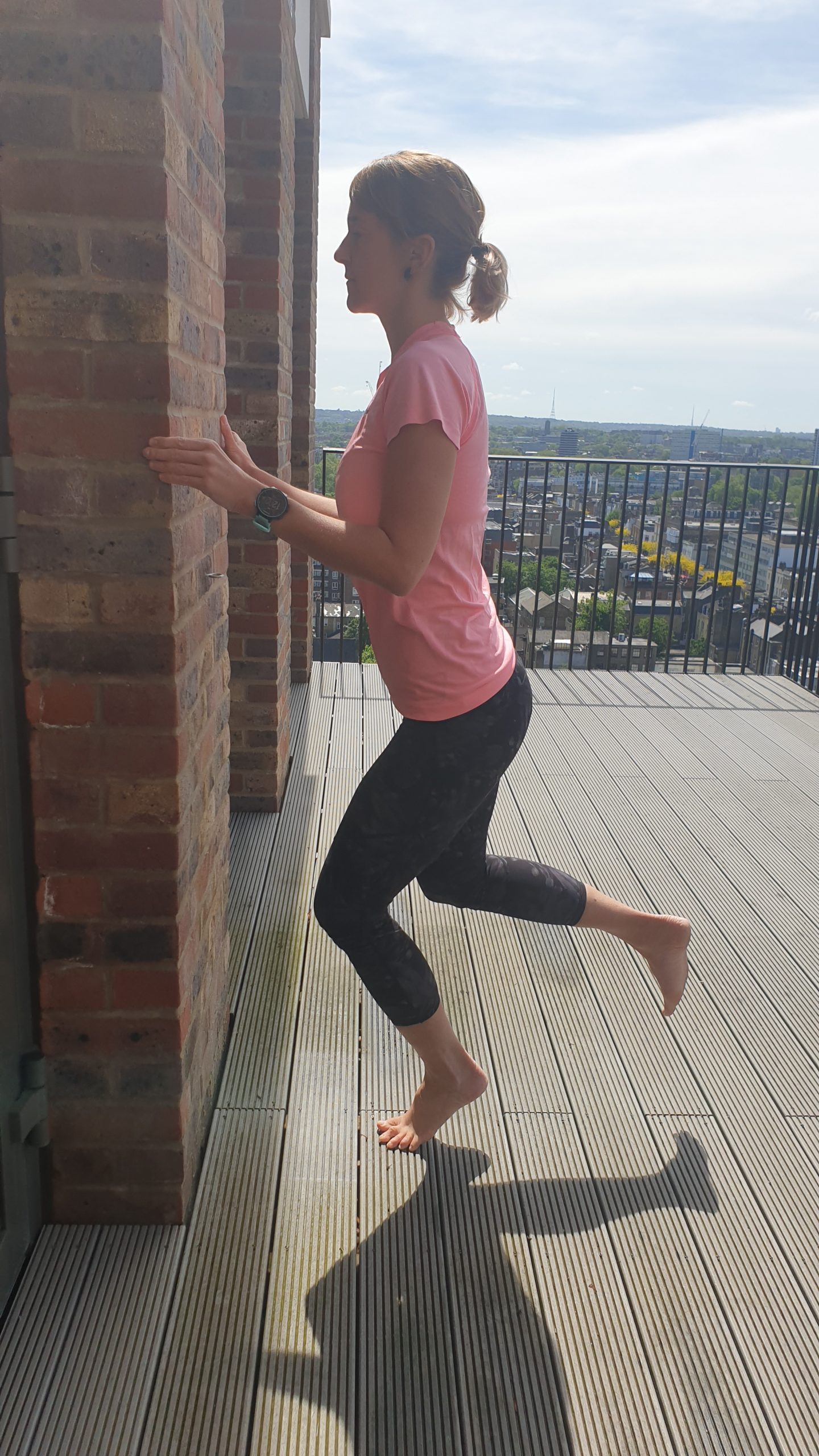
Deep knee calf raises
Squat leaning against the wall Knees angle 120-90 degrees Lift up and down through the heels 15 repetitions is a good target to aim for, if not possible build this up over a number of weeks then maintain
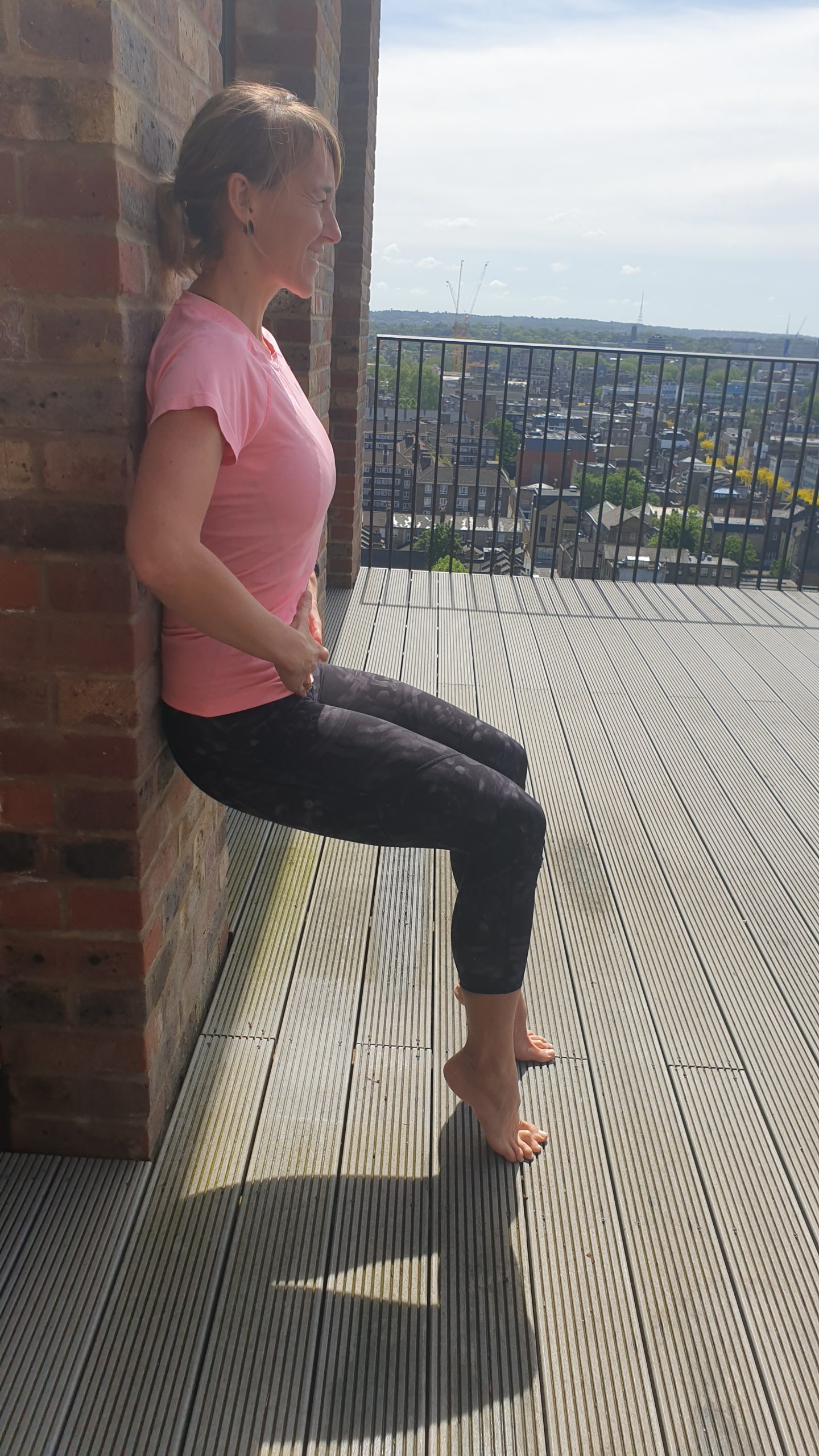
Wall supported Lunge Calf raise
Back foot against the wall Adopt a lunge position Front knee behind toes Narrow foot tracking to simulate running Push back foot into the wall for support and glute activation Lift up through the heel of the front foot 10 repetitions is a good target to aim for, if not possible build this up over a number of weeks then maintain.
Flexibility training
Regular stretching helps improve the muscles and tissues flexibility and ability to absorb load.
Post-run calf regime
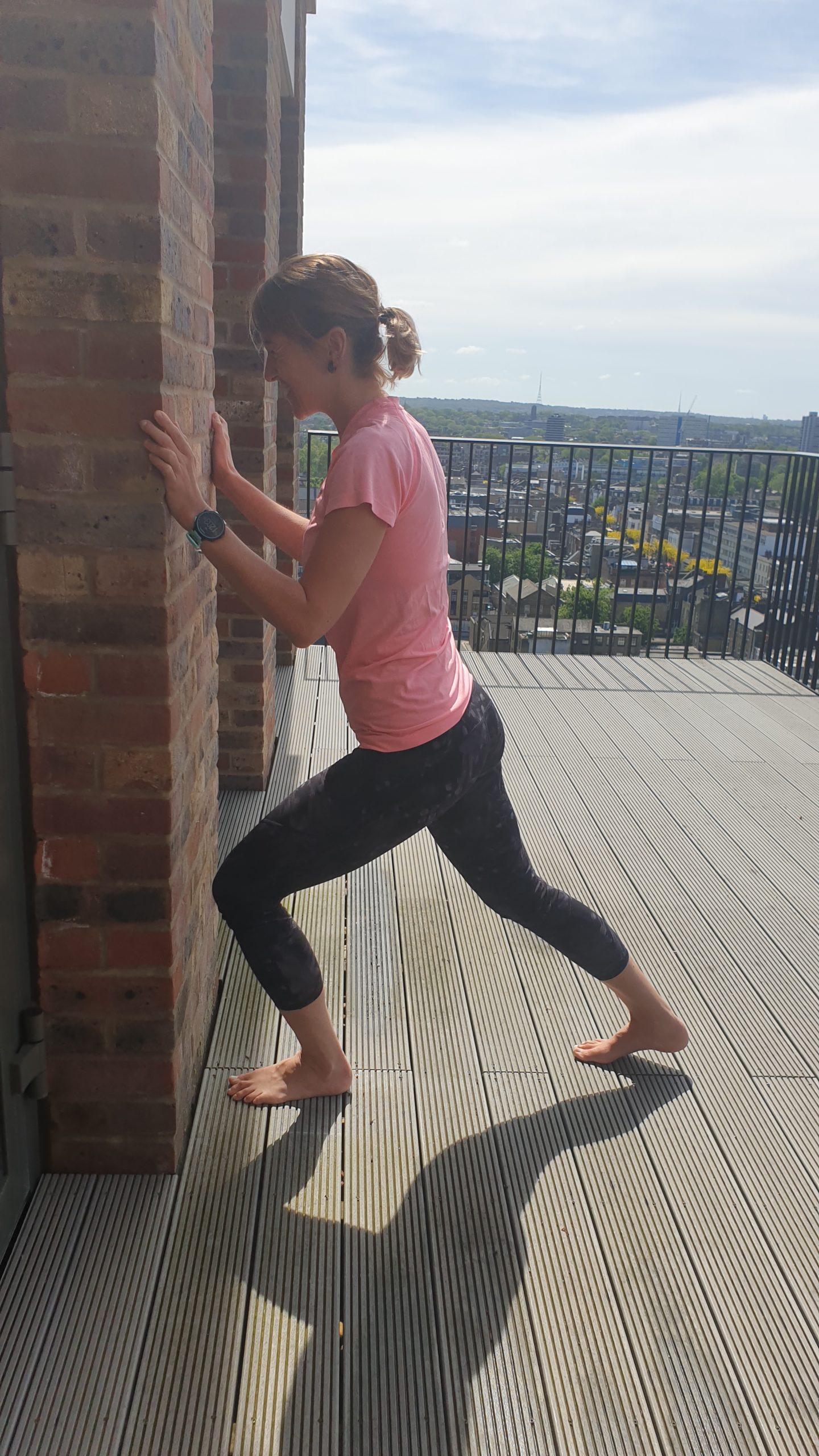
Gastrocs Stretch
Tracking feet in a straight line Back heel pushing into the floor Lean body weight forwards to feel the stretch in the back of the calf Hold this position for 40 seconds then switch sides
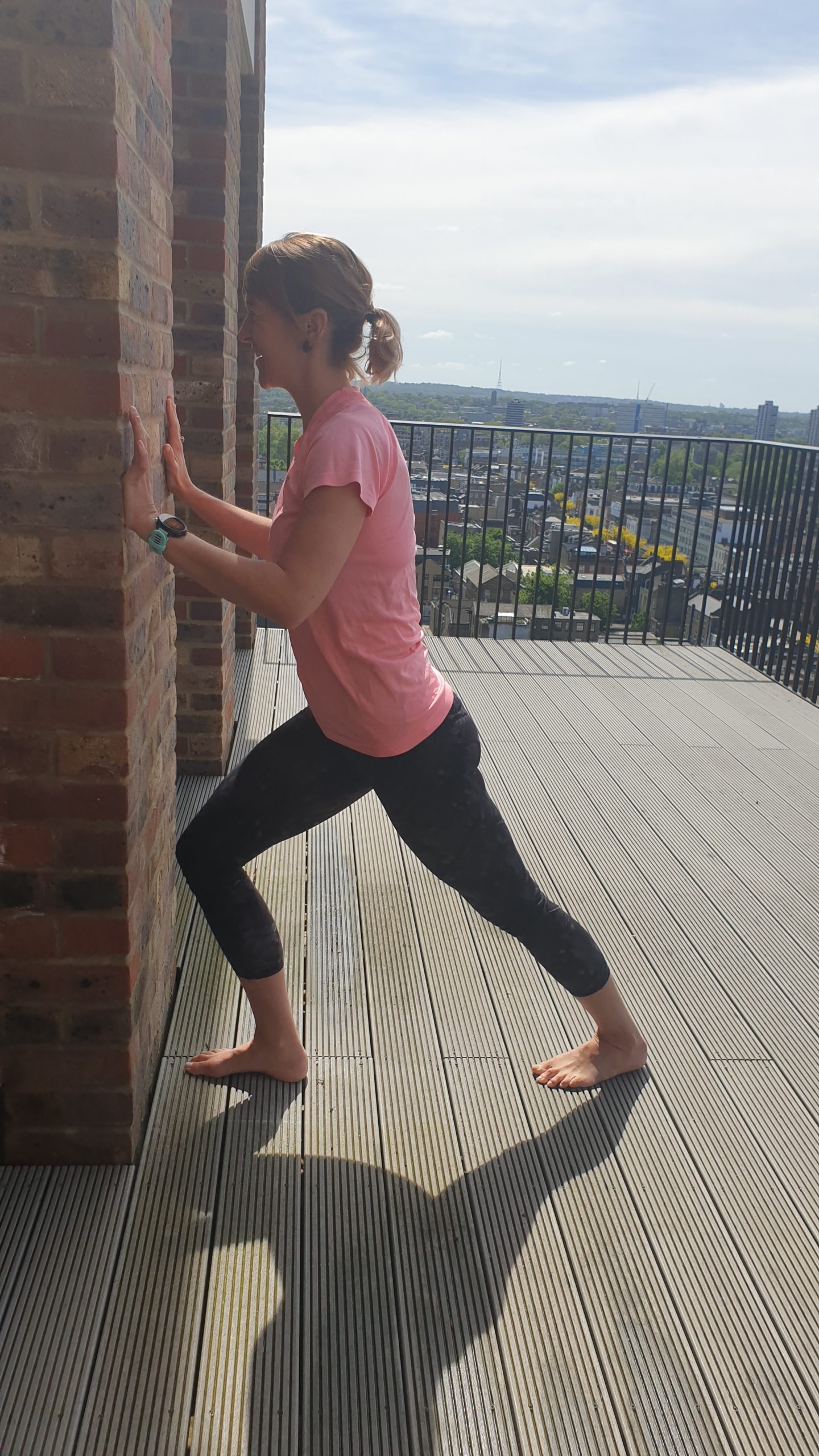
Gastroc Stretch Modification
As above cross the back foot over the midline This will then increase the stretch on the outside of the calf muscle Hold this position for 40 seconds then switch sides. 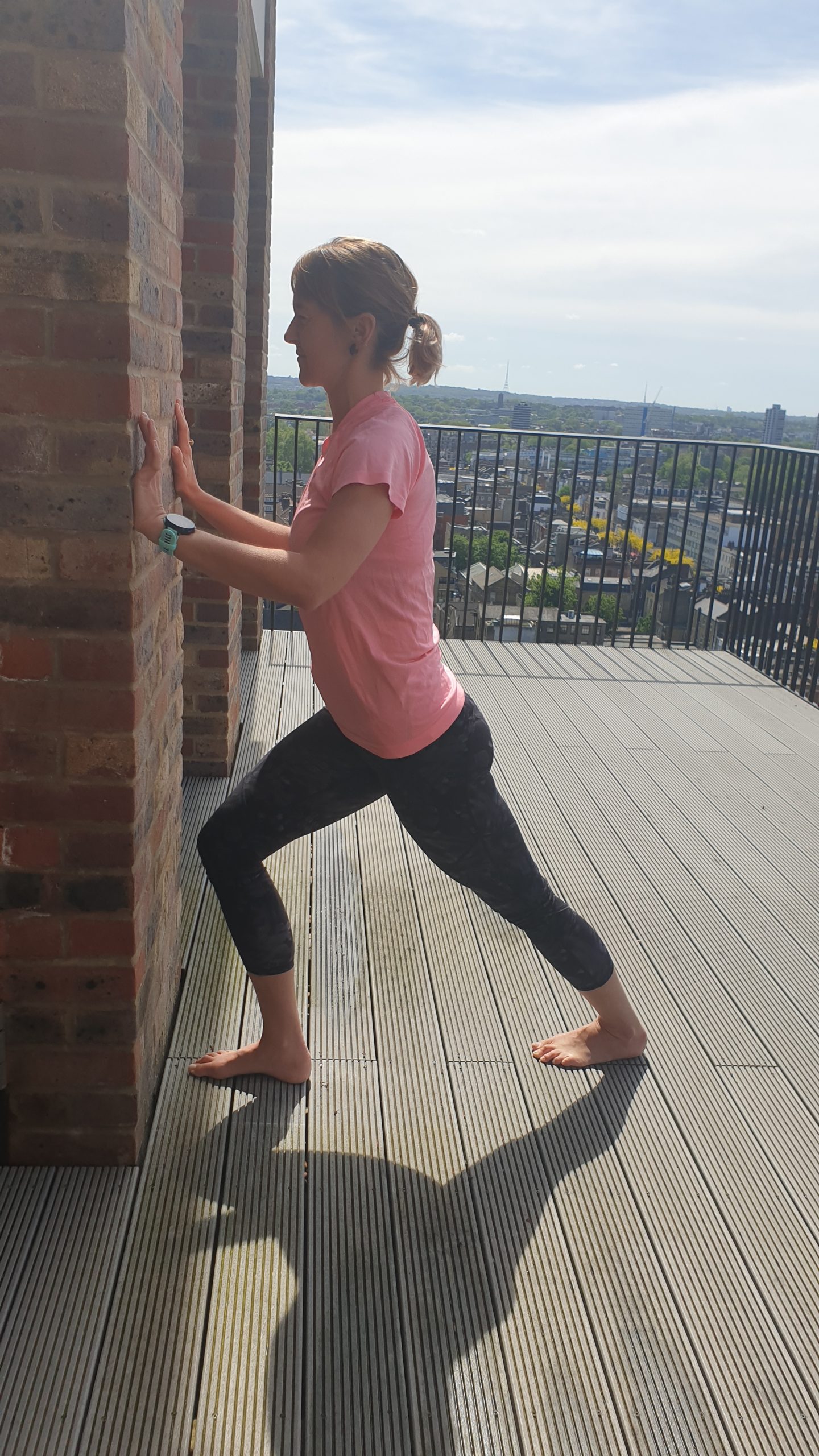
Downward Dog
Pushing one-foot heel into the floor Hips high Upper back extended Hold this position for 40 seconds then switch sides
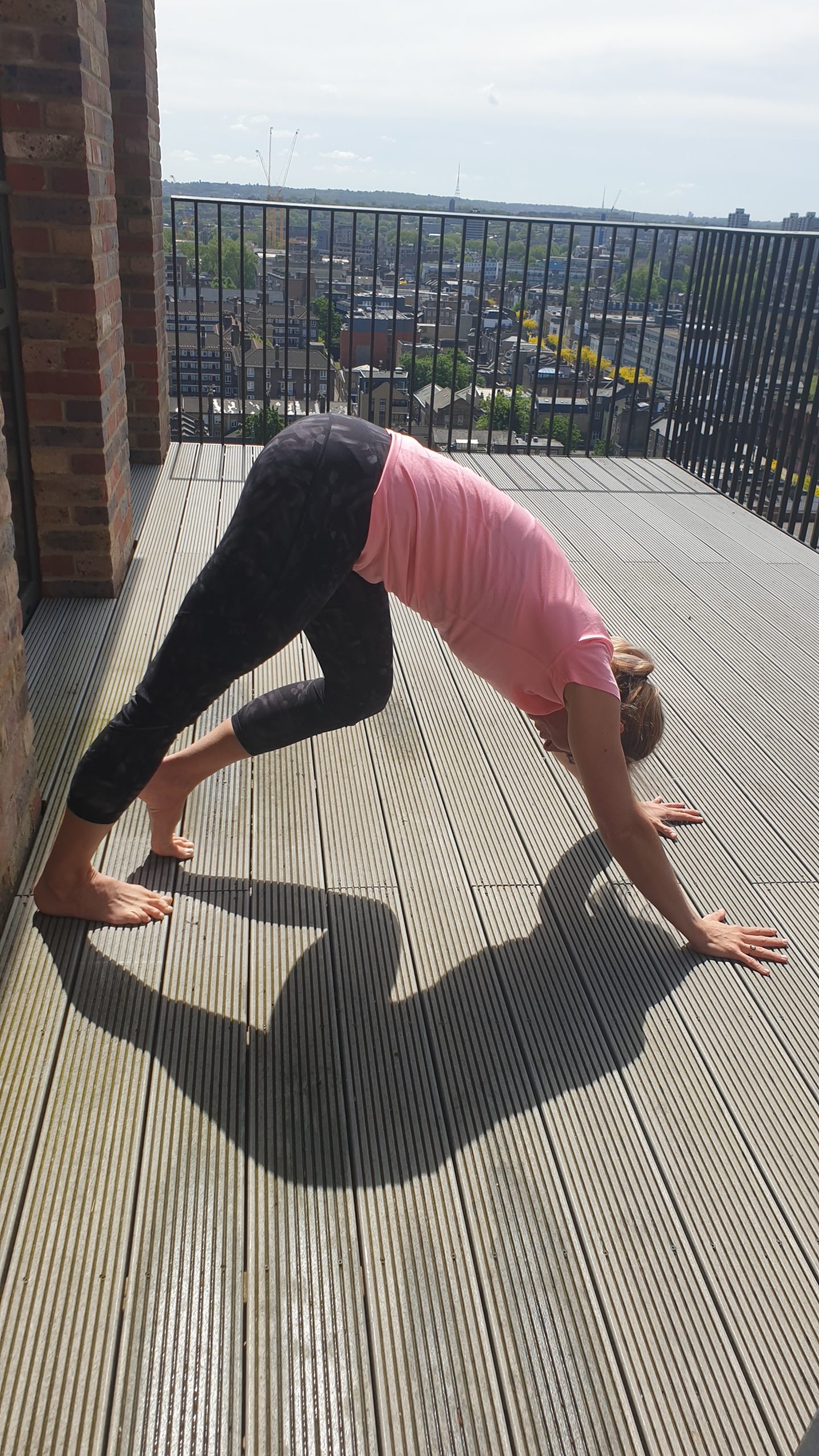
Treatment
If you spot these symptoms the initial management is PRICE (Rest, Compression, Elevation) Protect Unload the muscle and prevent disturbances of the injured area Rest Rest from activities that put stress through the calf. To reduces further damage to the area whilst in the inflammatory and repair phase Ice Slows the blood flow and acts as local analgesia helping recover by reducing muscle inhibition and development of movement dysfunction through the pain. Apply 5-10minutes each hour for the first-day post-injury Compression Prevents fluid accumulation and helps prevent unwanted movement. Use a Tubigrip, it provides support to the area and removal of waste products produced. Elevation Limiting swelling helps decrease the pressure applied through gravity and muscle contraction.
Three Phases of healing
After the strain, your body goes through three phases of healing
- Inflammatory stage (24 hours)
- The body flushes out damaged cells and floods the area with nutrients and enzymes. This presents physically as inflammation
- Repair phase (24-72 hours)
- The body begins to lay down collagen fibers forming a scar, and eventually, this fibrous connective tissue aligns along the lines of stress and grows stronger.
- Remodeling phase (72 hours – several months)
- Overlaps the repair phase. The scar tissue continues to remodel and adapt often for several months following injury.
Return to running
- Graded exercise back up to pain-free calf raises in both straight leg and bent leg as above.
- Return to running initially on a treadmill the slow and steady pace for two reasons
- The treadmill helps the pullback phase of the running gait
- The surface is completely consistent and 3 three if you feel any symptoms you can get off straight away
